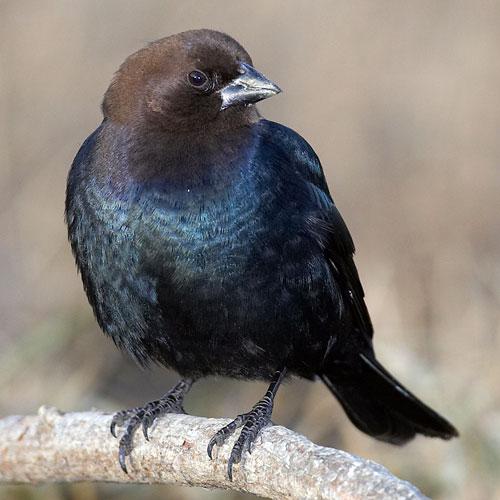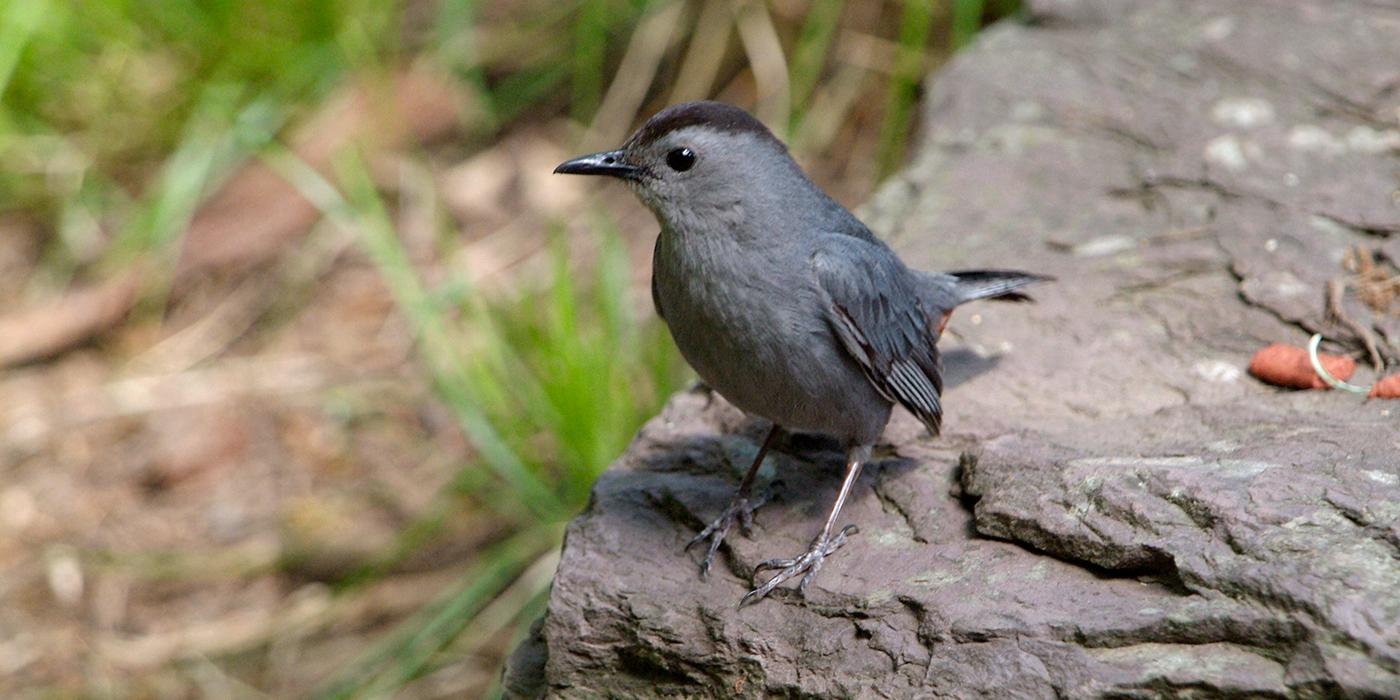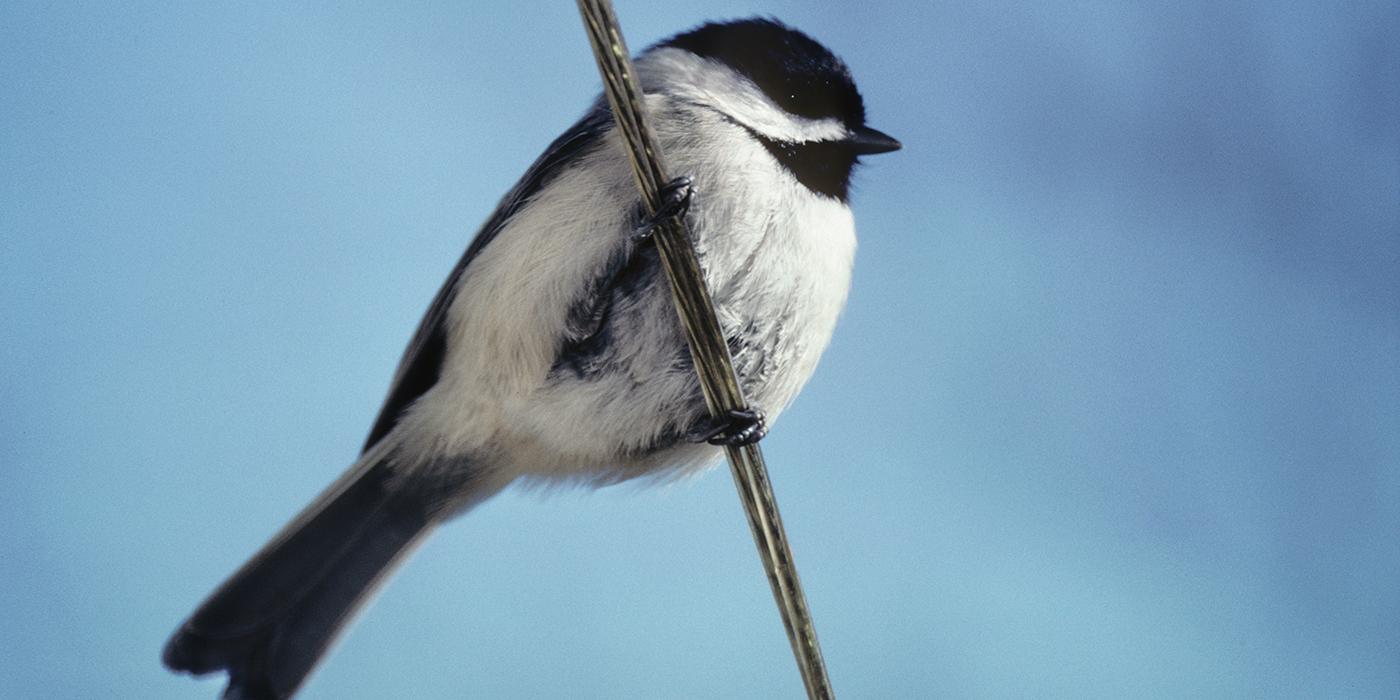Sitting in the Catbird Seat
Gray Catbird
Singing from a concealed perch, the catbird truly enjoys its comfortable position. With its tail held down, body feathers fluffed, and wings drooping at its sides, the catbird exuberantly sings a series of musical whistles and catlike meows, interspersed with imitations of other birds' songs.
Video © George Jameson
It may start singing before dawn, while it is still dark, and can continue until after dusk, being one of the last birds to settle in for the night.
The catbird is well-suited to crepuscular activity as its body is uniformly dark gray with the exception of a chestnut brown patch under the tail and a black crown, tail, bill, eyes and legs.
The catbird is fairly large for a songbird, almost 8 inches long, and has much to sing about. For unlike almost all neotropical migratory songbirds, the catbird has adapted well to the widespread urban and suburban habitats created by people.
In natural areas, catbirds are fond of wet, densely-vegetated, shrubby habitats such as bogs, streamsides, and tree fall gaps. These small, ephemeral, fragmented patches occur sporadically across the landscape and are frequently situated between other habitats. Although these areas have abundant food, cover, and water, competition for resources is fierce and predators are abundant.
To thrive in these habitats birds must have special adaptations such as the ability to respond to frequent nest predation and parasitism and to forage on a wide variety of seasonally available foods. Armed with these adaptations, catbirds are well prepared for the disturbed habitats of the 21st century's fragmented landscape.
Many songbirds put all their eggs in one basket in that they build only one nest each year. If a predator eats the eggs or young, the parents may have to wait until the following year to try again.
But catbirds are not like most other songbirds. They will attempt two or more nests in a season. This gives them a much better chance to fledge young in a season than other migratory songbirds.
Another defense catbirds have against predators is they hide their nests extremely well, often in extremely dense shrubbery with the rough exterior of twigs and leaves camouflaging the colorful bluish-green eggs inside.
Another problem songbirds must deal with is nest parasites. Brown-headed Cowbirds are the bane of many songbirds and are increasingly common in agricultural and disturbed areas. They do not build nests of their own but lay their eggs in the nests of unsuspecting songbirds. The cowbird's eggs are brooded just like the mother's own eggs, and the young are raised to adulthood.
Frequently, the survival of the cowbird's offspring comes at the expense of the host species' young—there is only so much food for the baby birds and cowbird babies grow more quickly than their stepsiblings and are more aggressive in begging for food.
Most songbirds are unable to differentiate cowbird eggs from their own but catbirds can. Gray Catbirds can identify cowbird eggs and will eject them from the nest. By not raising cowbird young, the catbird is able to give all of its gathered food to its own babies.
Many songbirds rely heavily on insects for food but catbirds find food from a variety of sources. Even in the breeding season, when most songbirds exclusively eat insects, catbirds get as much as 20 percent of their diet from fruit. The fragmented habitats that the catbird lives in provide a seasonal succession of berries and fruit (see Table 1).
| Season | Plant Name | Latin Name |
|---|---|---|
| Late spring | Mulberry | Morus spp. |
| Late spring | Serviceberry | Amelanchier spp. |
| Summer | Blackberry | Rubus spp. |
| Summer | Black Cherry | Prunus serotina |
| Fall | Dogwood | Cornus spp. |
| Fall | Viburnum | Viburnum spp. |
| Winter | Bayberry | Myrica pensylvanica |
| Winter | American Holly | Ilex opaca |
Most catbirds winter in the tropics of Mexico and Central America where fruit is quite abundant. About 80% of the catbird's winter diet is composed of fruit.
To find insects, necessary for the growth of baby catbirds, foraging is done in a range of niches. While many songbirds are restricted to a particular foraging area (for example, Black-throated Green Warblers feed at the ends of conifer branches and Ovenbirds feed on the forest floor), catbirds will forage on the ground, on lawn edges, in shrubs, and even in the treetops to find ants, beetles, caterpillars, grasshoppers, and spiders.
By eating a variety of food from a variety of places, catbirds are not as specialized as many other songbirds, and are better suited to finding food in habitats that have been disturbed by people.
In addition, catbirds are one of the few neotropical migratory songbirds that will use bird feeders. Although their bills are too thin to crack open seeds, they will eat halved oranges, raisins, peanut butter, and fruit-flavored suet. They are also quite fond of bird baths and whole families will communally bathe.
Although it is hardly among the most colorful of our songbirds, the Gray Catbird deserves our admiration for being one of the most adaptable. Its presence in our own backyards helps us connect with the natural world and reminds us that for most songbirds, the loss of natural habitats imperils them. The catbird's adaptability is the exception not the rule.



